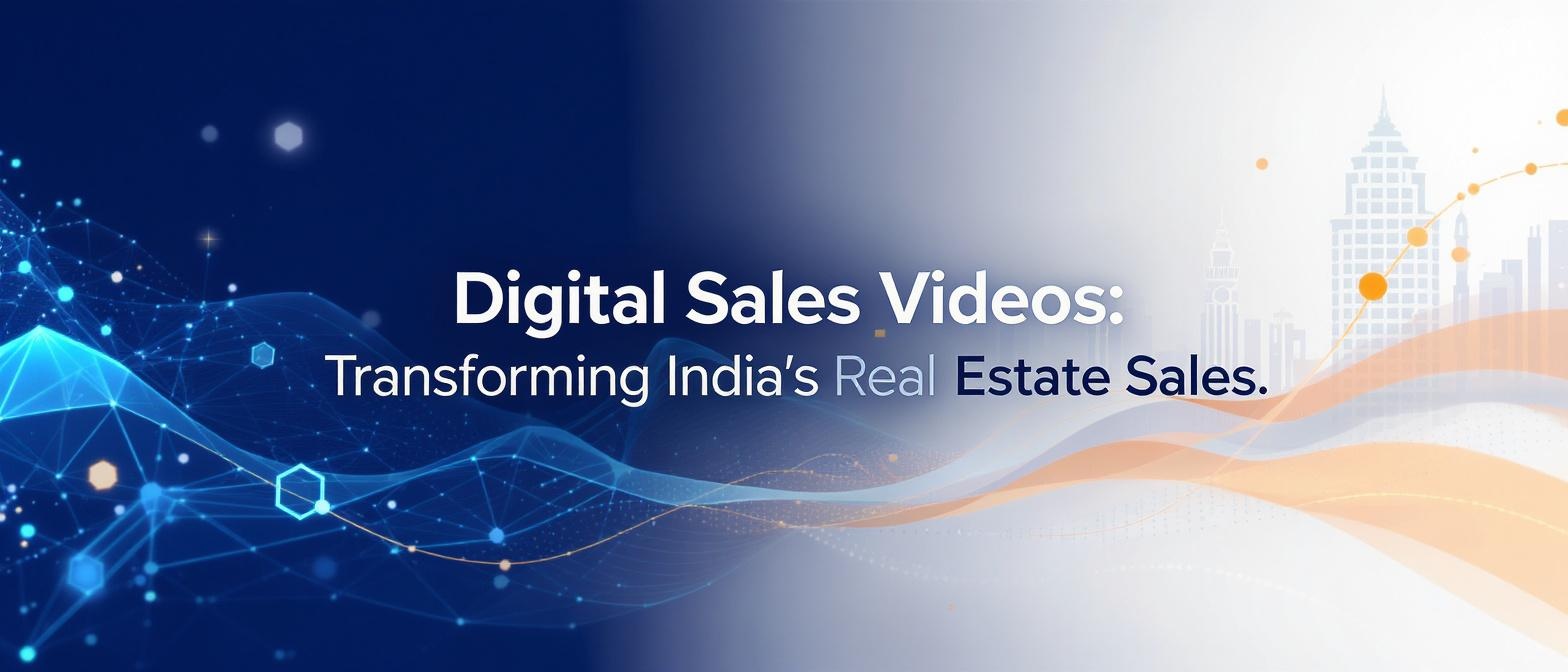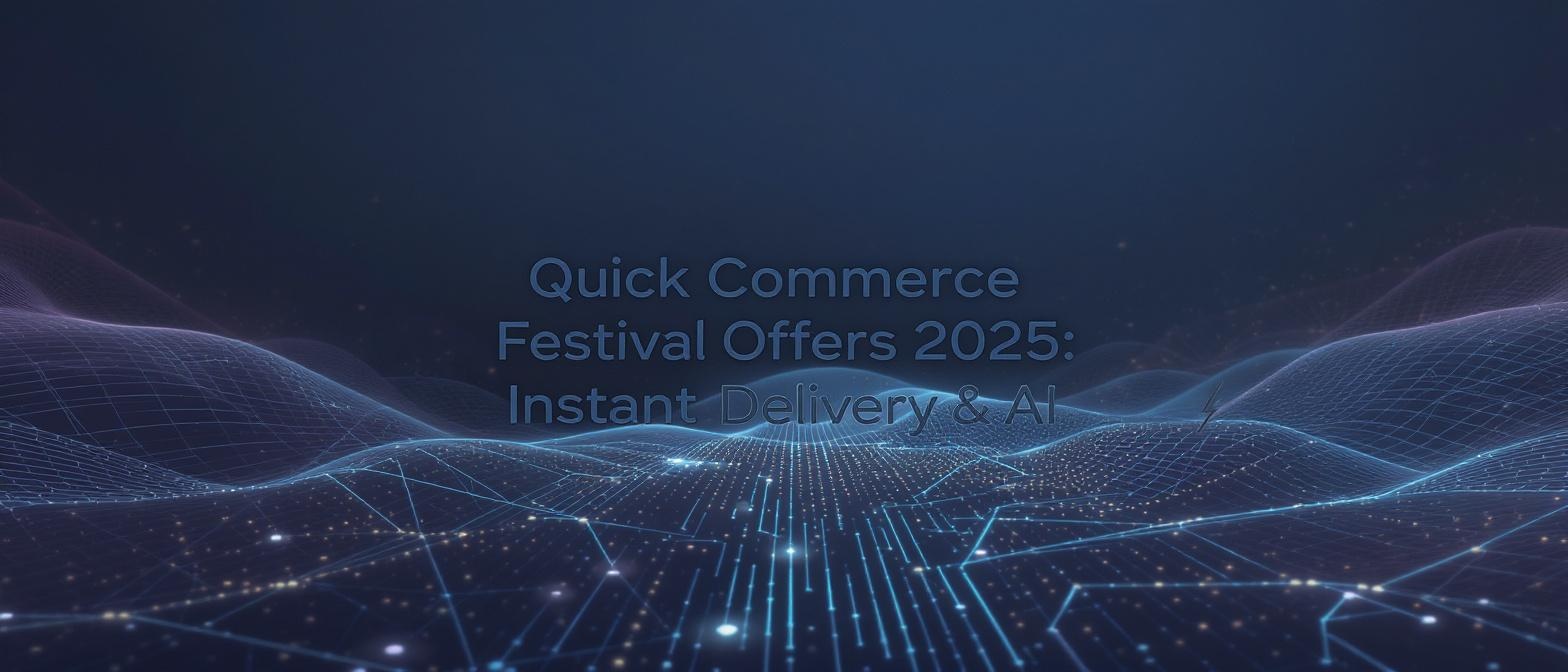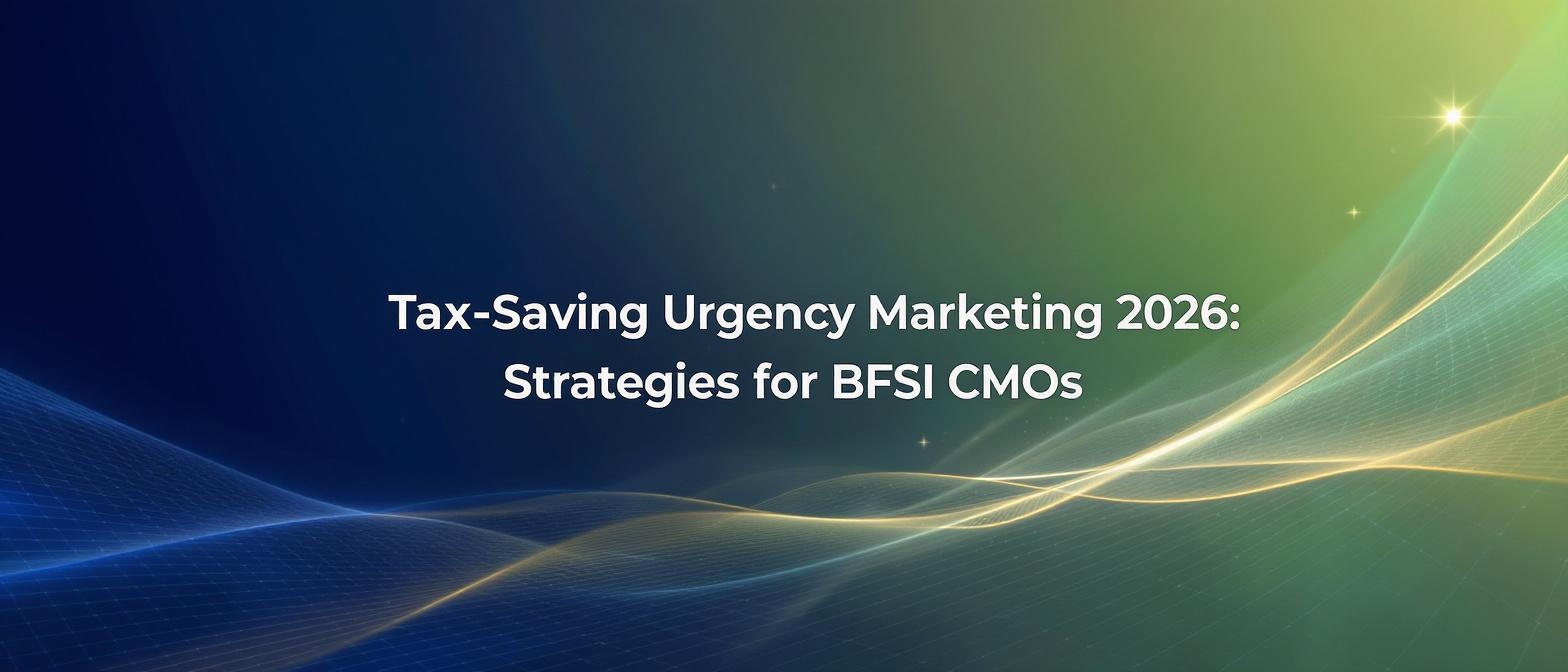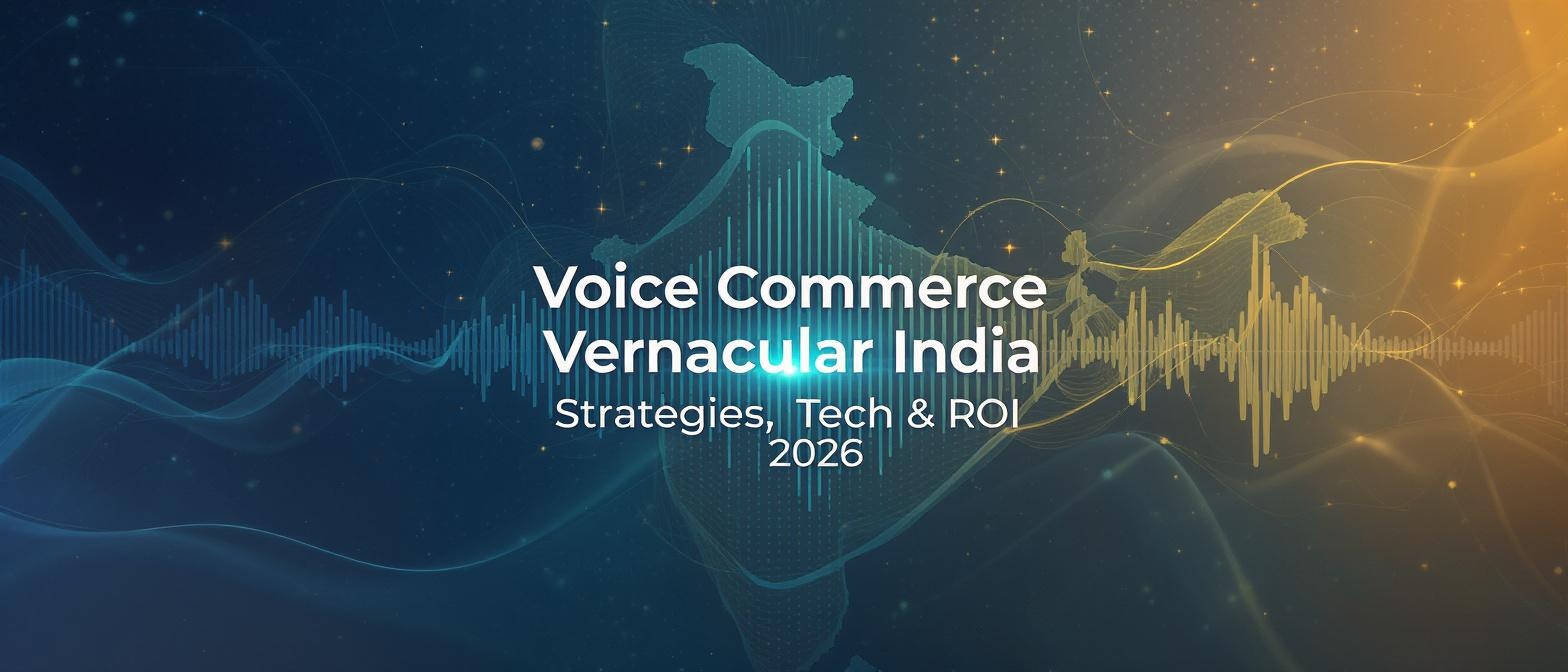How Construction Digital Sales Transformation Videos Are Revolutionizing Real Estate Digital Transformation in India
Key Takeaways
- Hyper-personalized video marketing is redefining real estate engagement in India.
- Automation streamlines sales processes with data-driven, at-scale personalization.
- Consistent construction updates via site progress videos build transparency and trust.
- Localized and multi-lingual content meets India’s diverse market needs.
The New Blueprint: Video-Led Digital Transformation in Indian Real Estate
Digital transformation in the construction and real estate sectors is no longer a futuristic concept; it’s the bedrock of modern operations. At its core, it is the strategic integration of digital tools to streamline project management, enhance stakeholder transparency, and create unforgettable customer experiences. The most powerful tool in this revolution is construction digital sales transformation videos, which are fundamentally changing how properties are marketed and sold.
This shift is critical in a market as dynamic as India, where technology is rapidly closing the gap between a buyer’s imagination and a project’s reality. This article explores how video personalization and marketing automation are addressing the nuanced sales enablement needs of the industry. We will dissect the strategies, technologies, and real-world applications defining the future of real estate digital transformation in India.
Source: whatfix.com/blog/digital-transformation-construction/
Section 1: Why Digital Transformation Matters in Construction & Real Estate
Digital transformation in this context means a wholesale adoption of integrated technologies. This includes cloud-based Enterprise Resource Planning (ERP) systems, advanced project management software, real-time data analytics, and mobile collaboration tools that connect the office to the construction site. These systems are not just digitizing old processes; they are creating entirely new, more efficient workflows.
Cloud ERP, for example, automates critical functions like budgeting, resource allocation, and financial forecasting, providing a single source of truth for all stakeholders. Real-time dashboards pull data from various sources to give project managers and investors an immediate, transparent view of progress and potential risks. According to a 2025 forecast by Deloitte, the integration of such digital tools is a key driver of optimism and efficiency gains in the engineering and construction industry.
This technological leap profoundly impacts stakeholder communication and the customer experience. By providing clear, data-driven insights, developers can build trust with investors and keep them informed. For buyers, the result is a seamless, transparent, and engaging journey from the first inquiry to the final handover, a cornerstone of successful real estate digital transformation in India.
Source: www.intellectsoft.net
Source: www.deloitte.com
Section 2: The Role of Construction Digital Sales Transformation Videos
Construction digital sales transformation videos are purpose-built visual assets designed to articulate a project’s value proposition with unparalleled clarity. These are not generic promotional clips but highly specific, data-rich videos that showcase design concepts, visualize complex architectural features, document tangible site progress, and clearly demonstrate potential ROI for investors.
The technical composition of these videos is sophisticated. They often blend multiple formats to create a compelling narrative:
- Drone Footage: Captures sweeping aerial views of the site, its location, and its surroundings.
- 3D Render Animations: Transforms architectural blueprints into photorealistic walkthroughs of finished spaces.
- Time-Lapse Sequences: Condenses months of construction progress into a few powerful seconds, showcasing momentum.
- Dynamic Overlays: Integrates key data points like unit availability, pricing, or completion percentages directly onto the video.
The benefits are immediate and substantial. These videos provide absolute visual clarity, eliminating misunderstandings that can arise from static brochures or floor plans. By transparently showing progress, they build deep-seated trust with clients and stakeholders, which ultimately helps to shorten sales cycles and accelerate decision-making in construction industry video marketing.
Source: advids.co/blog/digital-marketing-video
Section 3: The Power of a Real Estate Project Personalization Platform
A real estate project personalization platform is the engine that drives modern property marketing. This sophisticated system integrates directly with a company’s Customer Relationship Management (CRM) database via APIs. It ingests critical buyer data—such as their name, budget, preferred location, and unit interests—and uses it to dynamically customize video content at scale.
This leads to property marketing video automation, an automated rendering pipeline capable of generating thousands or even millions of unique videos from a single template. This is achieved by feeding personalized data into predefined placeholders within the video. For instance, a JSON payload might contain text_data arrays for multi-line personalization (e.g., ["Hi Priya,", "Welcome to your future home at Unit 702"]) and image_data placeholders for unique floorplan images or personalized offer details.
Platforms like TrueFan AI enable this at an industrial scale. Their enterprise solution can transform a single 15-minute celebrity or CEO shoot into millions of unique, personalized videos, with each render taking under 30 seconds. This technology allows for seamless API integration with CRM, WhatsApp Business, and email marketing platforms, ensuring the right video reaches the right person at the right time. This is a crucial component of effective construction customer engagement automation.
Section 4: Leveraging Construction Site Progress Videos & Project-Specific Marketing Videos
Transparency is the currency of trust in real estate, and construction site progress videos are its most effective distributors. These are regularly scheduled videos, often created weekly or bi-weekly, that use time-lapse or on-the-ground walkthroughs to showcase key construction milestones. From the pouring of the foundation and the erection of the steel frame to the final finishing touches, these updates keep buyers and investors emotionally and financially invested in the project.
Technically, these videos can be enhanced by embedding location metadata, using GPS-guided drone flyovers for consistent perspectives, and overlaying real-time data like completion percentages. This data-driven approach transforms a simple update into a powerful verification of progress.
Simultaneously, project-specific marketing videos allow developers to move beyond one-size-fits-all messaging. Each campaign can be tailored to highlight the unique selling propositions of a specific development—whether it’s a stunning lakeside view, proximity to a new metro station, or exclusive amenities. This strategy enables highly segmented audience targeting and significantly boosts local SEO, making marketing efforts more efficient and effective.
Section 5: Personalizing the Real Estate Buyer Journey
Effective real estate buyer journey personalization involves delivering tailored video content at each critical stage of the decision-making process. This ensures that potential buyers receive the exact information they need to move forward with confidence.
- Awareness Stage: The journey begins with short, captivating video teasers. Imagine a celebrity brand ambassador greeting leads by name and referencing their city, creating an instant, personal connection that cuts through the noise of generic advertising.
- Consideration Stage: As interest grows, the content becomes more detailed. A potential buyer might receive a personalized virtual walkthrough of their specific unit of interest, complete with dynamic pricing and configuration options overlaid on the screen.
- Decision Stage: At the final hurdle, hyper-personalization seals the deal. A unique offer video can be generated that addresses the buyer by name, confirms their preferred units, outlines exclusive financing options, and includes a direct call-to-action to connect with a sales agent.
The technical execution relies on CRM triggers. When a lead’s status changes in the sales pipeline (e.g., from “Inquiry” to “Site Visit Scheduled”), it can automatically trigger the generation and dispatch of the next relevant video via email or WhatsApp. Research from Wyzowl in 2025 shows that 93% of marketers report a strong ROI from video, and personalization is a key driver of that success.
Source: wyzowl.com/video-marketing-statistics/
Section 6: Property Development Video Campaigns in the Indian Market
The landscape for property development video campaigns in India is shaped by a unique confluence of factors. Rapid urbanization, a massive mobile-first audience, and regulatory reforms like the Real Estate (Regulation and Development) Act (RERA) have created a market that craves transparency, speed, and digital convenience. India’s PropTech market is projected to grow at a staggering CAGR of 18.2% through 2025, fueled by this demand for innovation.
Several AI-driven personalization trends are emerging as dominant forces in the region:
- Vertical-First Content: With the majority of users consuming content on mobile, videos formatted for Instagram Reels and Stories are essential for capturing attention.
- Shoppable Videos: These innovative formats allow viewers to click directly on a property listing within the video to schedule a visit or download a brochure, creating a seamless path from discovery to action.
A critical, and often overlooked, aspect is multi-lingual localization. In a country as diverse as India, the ability to deliver a marketing message in a buyer’s native language is a significant advantage. Advanced generative AI now enables diffusion-based lip-sync technology, allowing a single video to be rendered in Hindi, Tamil, Bengali, and dozens of other languages while maintaining the original speaker’s voice and perfect lip movements. This level of localization is central to the future of real estate digital transformation in India.
Source: comswomsmedia.com
Source: www.futuremarketinsights.com
Section 7: Automating Construction Customer Engagement
Construction customer engagement automation refers to the strategic use of technology to manage and nurture relationships with clients and prospects without constant manual intervention. This ecosystem includes AI-powered chatbots for instant query resolution, dynamic email sequences, and, most powerfully, automated video follow-ups.
The technical backbone of this strategy involves integrating video generation APIs with leading marketing automation platforms like HubSpot, Zoho, or Salesforce. This allows developers to set up sophisticated workflows where personalized videos are automatically triggered at predefined touchpoints in the customer journey. For example, 24 hours after a potential buyer downloads a brochure, the system can automatically send them a personalized video from a sales agent thanking them by name and inviting them to a virtual tour.
The benefits of this approach are threefold. It ensures consistent, on-brand messaging for every lead, significantly reduces the manual workload on sales and marketing teams, and dramatically improves lead nurturing by providing timely, relevant, and engaging content. This automation is a key factor in streamlining operations and driving higher customer satisfaction.
Source: whatfix.com/blog/digital-transformation-construction/
Section 8: Case Study & Integration with TrueFan AI Enterprise
The theoretical power of property marketing video automation is best understood through real-world application. While from different industries, campaigns powered by TrueFan AI’s enterprise platform offer a clear blueprint for the real estate sector.
- Case Study A: Zomato’s Mother’s Day Campaign: Zomato generated 354,000 unique personalized videos in a single day. Translated to real estate: A developer could send out hundreds of thousands of personalized video invitations for a new project launch, with a celebrity brand ambassador addressing each recipient by name.
- Case Study B: Hero MotoCorp’s Festive Greetings: This campaign delivered 2.4 million personalized videos to customers. Application for real estate: A large developer could engage their entire database of homeowners during a festive season with a personalized greeting that also cross-promotes new investment opportunities.
Integrating this capability into existing workflows is straightforward. A developer’s tech team would use a simple API endpoint (https://newvideorequest.truefans.in/api/post_new_request) to send a POST request with a JSON payload containing the personalization data (e.g., text_data for names, image_data for floorplans). A status check API and webhooks provide real-time updates on video rendering and delivery.
Solutions like TrueFan AI demonstrate ROI through a comprehensive analytics dashboard. Marketing teams can track crucial metrics like view-through rates, click-through rates, and conversion lift. They can also A/B test different scripts, calls-to-action, or even celebrity spokespeople to continuously optimize campaign performance, making the real estate project personalization platform a data-driven growth engine.
Section 9: Future Trends & Strategic Recommendations for 2025 and Beyond
The digital evolution of construction industry video marketing is accelerating. Looking ahead to 2025 and beyond, several key trends are set to redefine customer engagement.
- Interactive "Choose-Your-Path" Videos: These will allow buyers to navigate a virtual tour based on their own interests, clicking on different rooms or features to explore in more detail.
- Augmented Reality (AR) Enhanced Site Walkthroughs: Buyers will be able to use their smartphones to overlay digital renderings of a finished apartment onto the real-world view of a construction site.
- AI-Driven Conversational Video: This emerging technology combines chatbots with video, allowing a user to ask questions and receive a real-time, personalized video response from an AI-powered avatar or a pre-recorded brand ambassador.
To stay ahead, real estate developers should prioritize a pilot program for shoppable video ads on social media platforms. Furthermore, adopting low-latency personalization is crucial for engaging the mobile-first Indian consumer who expects instant, relevant content. The ultimate strategic imperative is to evaluate and invest in a technology platform that supports massive scale, deep automation, and seamless integration with your existing sales and marketing stack.
Source: domain6inc.com
Conclusion: Building the Future, One Personalized Video at a Time
The convergence of video technology and automation is no longer a peripheral trend but the central pillar of modern real estate sales and marketing. Construction digital sales transformation videos have proven their ability to build trust, create emotional connections, and accelerate the sales cycle. For developers navigating the competitive landscape of real estate digital transformation in India, embracing personalization at scale is not just an option—it is the definitive path to growth.
By leveraging powerful automation platforms, real estate firms can deliver a superior buyer journey, transforming a complex and often stressful process into a transparent, engaging, and deeply personal experience.
Ready to revolutionize your property marketing? Schedule a demo to see how TrueFan AI’s enterprise solutions can help you connect with millions of buyers through the power of personalized video.
Frequently Asked Questions
What is the primary benefit of using personalized videos in real estate marketing?
The primary benefit is a dramatic increase in engagement and conversion rates. Personalization makes the marketing message feel like a one-to-one conversation, building an immediate connection and trust with potential buyers, which is proven to shorten the sales cycle.
How technical does my team need to be to implement a video automation platform?
Modern platforms are designed for ease of integration. While an initial setup involving API calls is required, daily operation is often managed through a user-friendly dashboard. The platform handles the complex video rendering, and integrations with CRMs like Salesforce or HubSpot are typically well-documented.
Can personalized videos be used for post-sales engagement?
Absolutely. Automated, personalized videos are highly effective for post-sales communication, such as sending construction updates, personalized welcome videos upon possession, or anniversary greetings, which helps build long-term customer loyalty and generate referrals.
How does video personalization work with data privacy regulations?
Reputable platforms operate on a consent-first model. They use customer data provided by the developer (which the customer has consented to share) solely for the purpose of generating the video. Leading platforms are also compliant with data security standards like ISO 27001 to ensure all information is handled securely.
What kind of ROI can be expected from implementing a solution like TrueFan AI?
The ROI is measured through several key metrics. Case studies have shown significant lifts in message open rates (up to 17% higher), campaign participation (up to 3x higher), and overall conversion rates. The analytics dashboard provided by TrueFan AI allows brands to track these metrics in real-time and continuously optimize for better performance.





